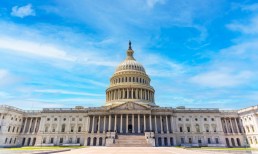Holidays aren’t just for marking centuries-old traditions or historic milestones: Retailers are creating their own new-age eCommerce celebrations and bringing in big bucks in the process. Chinese retailer JD.com, for example, had a record-breaking shopping event this month.
Overall, Chinese retailers such as JD.com — along with Alibaba — take the lead in revenue during shopping holidays by far. Yet interest in shopping holidays in the U.S. — such as Amazon Prime Day — is growing through expanded deals and targeted marketing efforts.
Here’s how retailer-created shopping holidays stack up between Alibaba, JD.com and Amazon.
Alibaba took in a gross merchandise volume of $25.3 billion for 2017’s Singles Day Global Shopping Festival, up 39 percent from 2016. Daniel Zhang, chief executive officer of Alibaba Group, said the $25 billion represents changing attitudes of both retailers and customers toward digital: “It represents the aspiration for quality consumption of the Chinese consumer, and it reflects how merchants and consumers alike have now fully embraced the integration of online and offline retail.”
In terms of payments, a lion’s share of total gross merchandise volume for the 24-hour shopping event — 90 percent — was settled through Ant Financial’s Alipay. The Chinese online retailer said that in 2016, 82 percent of gross merchandise volume was settled through Alipay, underscoring Chinese consumers’ growing preference for digital payments.
JD.com’s 618 Shopping Festival brought in $24.6 billion in June, according to data from Coresight Research. The holiday, which celebrates JD.com’s founding, is becoming more popular: The company’s 2018 event saw a sales increase of 37 percent over 2017. Personal computers, air conditioners, food and digital products topped JD’s sales charts over the holiday. Mobile phones were a particularly popular item: JD.com sold 10,000 units of such products within just eight seconds on the last day of the event.
Advertisement: Scroll to Continue
How does a retailer such as JD.com make it possible to ship all of these purchases to consumers in a timely manner? The company utilized 27 unmanned warehouses during its holiday. As a result, JD.com enjoyed an increase of 1,415 percent over 2017 in daily order-processing power. Furthermore, the eCommerce retailer’s stores were able to deliver a sizeable amount of those orders — 90 percent — in only one to two days.
Amazon brought in an estimated $2.5 billion to $2.9 billion in worldwide sales through Prime Day. Similar to JD.com, Amazon’s own shopping holiday is becoming more popular too. A Periscope By McKinsey survey, for example, reported a 14 percent year-over-year increase of those shopping on the mega-sale day, with just 22 percent of consumers making purchases the year before.
Amazon has inspired a new crop of holidays: Macy’s, Walmart and Best Buy have decided to offer their own versions of Prime Day. But, of course, they used different names. Macy’s, for example, went with “Black Friday In July” instead and Best Buy used “Big Deals Day” for its event. In terms of eCommerce retailers, Wayfair unveiled a “Way Day” on April 25 with deals similar to those offered on Black Friday.
While Amazon is encouraging other holidays in the U.S., the eCommerce retailer is still dwarfed by JD.com, Alibaba and the Chinese market. Alibaba Chairman Jack Ma remarked in 2015 that “China’s middle class is equal in size to the entire U.S. population and is expected to double within seven years.” With such predicted growth, Singles Day and the 618 Shopping Festival can only be expected to grow even bigger.




